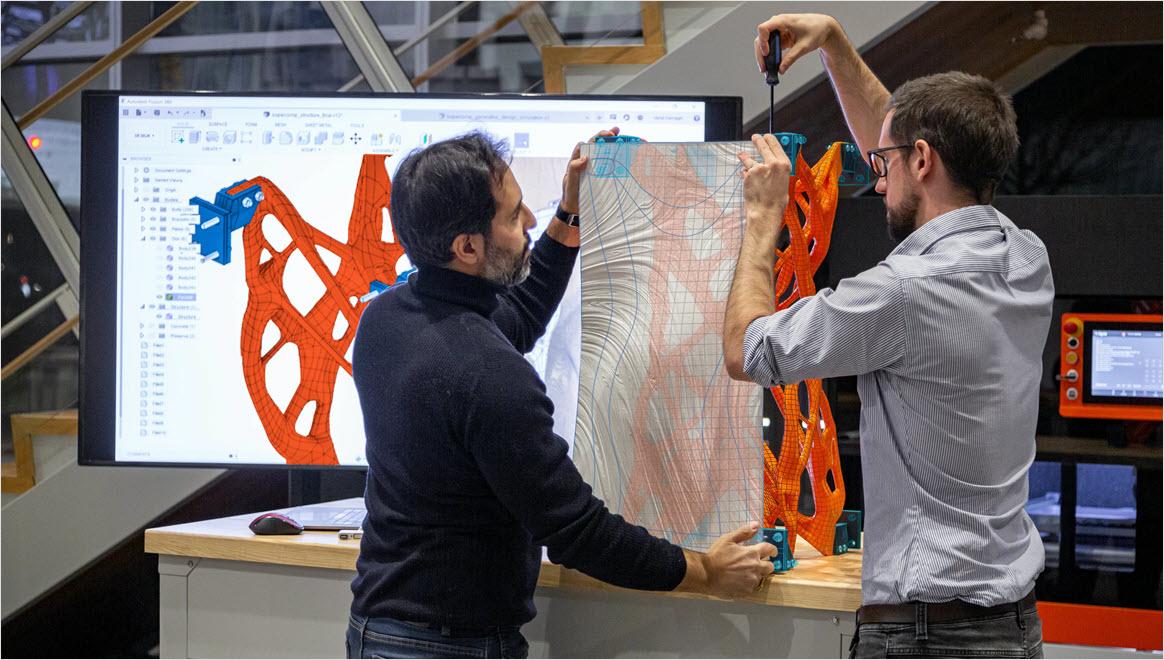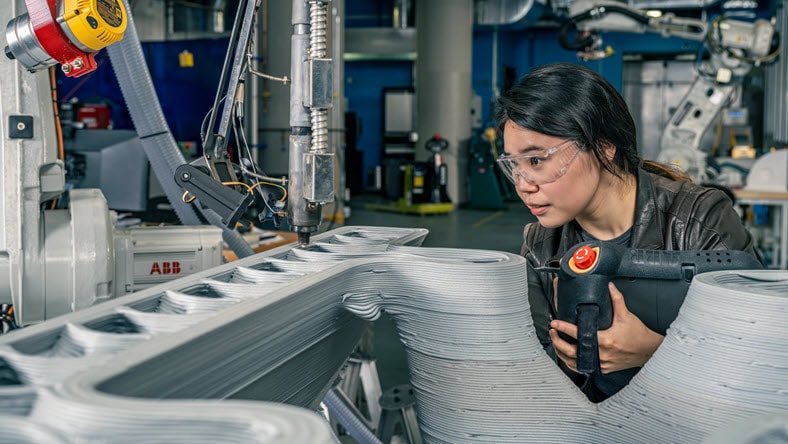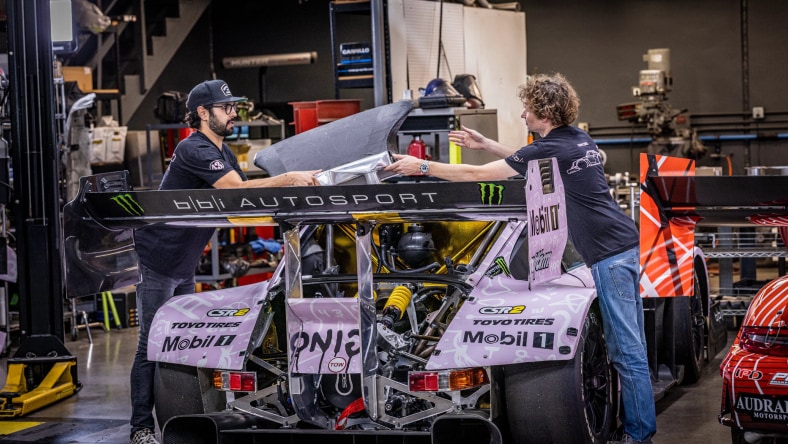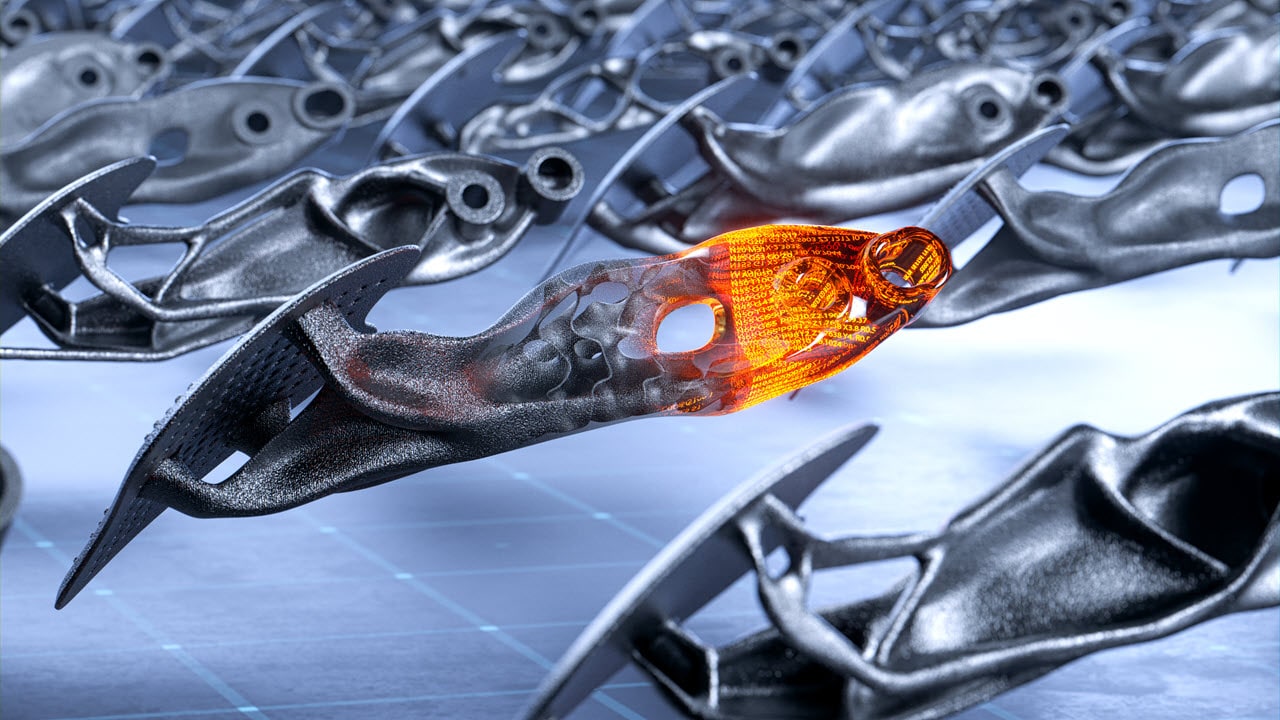& Construction

Integrated BIM tools, including Revit, AutoCAD, and Civil 3D
& Manufacturing

Professional CAD/CAM tools built on Inventor and AutoCAD
Generative design AI is the application of generative AI that focuses on using artificial intelligence algorithms to generate and optimise designs. It uses algorithms and machine learning techniques to explore a range of design possibilities to find optimal solutions based on given constraints and objectives. Designers, engineers and manufacturers can input design goals and constraints, and the AI system generates multiple design options that meet those requirements.
By using generative design AI tools like Autodesk Fusion, you can explore design possibilities that may not have been considered otherwise, leading to more efficient and creative solutions. It helps streamline the design process, reduce costs and improve the overall quality and performance of the final product.
Explore a vast number of design possibilities and generate innovative solutions that may not have been considered by human designers.
Generative design AI can optimise designs based on given constraints and objectives. It can consider factors like material usage, structural integrity, cost and performance to generate designs that are efficient and optimised for specific requirements.
Speed up the design process by automating the generation and evaluation of design options. It can quickly iterate through numerous design variations, allowing you to explore a wide range of possibilities in a shorter amount of time.
Generative design AI provides a common platform for exploring and evaluating design options, enabling better communication and decision-making. It also helps bridge the gap between different disciplines and expertise, leading to more holistic and integrated designs.
Generative design AI is widely used in manufacturing and product design to optimise the design of components and products. It can generate designs that are lightweight, structurally sound and cost-effective.
Generative design AI is used to optimise building designs, improve structural integrity and enhance energy efficiency. It can generate design options that consider factors like material usage, building performance and environmental impact.
Generative design AI helps optimise vehicles and aircraft. It generates designs that are aerodynamically efficient, lightweight and structurally robust, thus helping improve fuel efficiency, reducing emissions and enhancing overall performance in these industries.
Generate manufacturing-ready designs with your requirements, constraints, materials and manufacturing options.
Consider cloud-generated designs based on visual similarities, plots and filters powered by machine learning.
Avoid long, manual import-export processes. Pick your outcome and start editing in your modelling environment.
Simultaneously solve for various design outcomes, freeing up your time to focus on other tasks.
Optimise part design and performance with unlimited cloud solves for generative design, FEA, electronic cooling, injection moulding and more.
NEWTON ENGINEERING
Newton | Engineering and Product Development are supporting the Mars Sample Return with a lid designed using generative design in Autodesk Fusion.
Image courtesy of Newton | Engineering and Product Development
STEWART-HAAS RACING
Stewart-Haas Racing is a championship-winning NASCAR organisation. Learn how the team was able to lightweight a brake pedal using generative design in Autodesk Fusion.
Image courtesy of Stewart-Haas Racing
SRAM
Bicycle component manufacturer, SRAM, used additive manufacturing and generative design in Autodesk Fusion to create a new type of bicycle crankarm.
Image courtesy of SRAM
Get ahead of the curve and gain access to more design alternatives and faster production with generative design in Autodesk Fusion.
Generative design in Autodesk Fusion is a tool powered by AI that is shaping the future of manufacturing, one unique outcome at a time.
These videos and step-by-step guides will help you set up and create generative designs in Autodesk Fusion.
Generative design AI typically involves inputting design goals and constraints into an AI system, which then generates multiple design options that meet those requirements. The AI system can iterate through numerous design variations, considering factors like material usage, structural integrity, cost and performance, to generate innovative and optimised designs.
Generative design (US Site) and generative AI are related concepts but have distinct differences:
Generative design is a specific application of AI that focuses on using AI algorithms to generate and optimise designs. AI is a broader field that encompasses the development of intelligent systems capable of performing a wide range of tasks.
Yes. Autodesk Fusion 360, a popular 3D CAD, CAM and CAE software, includes generative design functionality. Autodesk has integrated generative design capabilities into Fusion 360 to enable designers and engineers to explore and optimise design options using AI algorithms.
With generative design in Fusion 360, users can define design goals and constraints, such as material usage, manufacturing limitations and performance requirements. The software then uses AI algorithms to generate multiple design options that meet those criteria. These generated designs can be further refined and evaluated by the user to select the most suitable solution.
Generative design AI has several applications in the manufacturing industry. Here are a few examples:
Optimal Part Design: Generative design AI can be used to optimise the design of individual parts or components. By entering design goals and constraints, such as weight reduction, structural integrity and manufacturing limitations, generative design AI algorithms can generate multiple design options that meet those criteria. This helps manufacturers create lightweight, efficient and cost-effective parts.
Assembly and Manufacturing Process Optimisation: Generative design AI can optimise the assembly and manufacturing processes. By considering factors such as material usage, tooling requirements and production constraints, generative design AI algorithms can generate optimised assembly sequences and manufacturing workflows. This can lead to improved efficiency, reduced costs and enhanced quality in the manufacturing process.
Product Customisation: Generative design AI can assist in product customisation by generating design variations tailored to specific customer requirements. By entering customer preferences and constraints, generative design AI algorithms can generate personalised product designs that meet those specifications. This enables manufacturers to offer customised products without sacrificing efficiency or cost-effectiveness.
Material Selection and Optimisation: Generative design AI can help in selecting and optimising materials for manufacturing. By considering material properties, performance requirements and cost factors, generative design AI algorithms can suggest optimal material choices for specific applications. This helps manufacturers make informed decisions about material selection, leading to improved product performance and cost-efficiency.
Design for Additive Manufacturing (3D Printing): Generative design AI is useful in designing for additive manufacturing processes like 3D printing. By using generative design AI, manufacturers can explore complex and organic geometries that are difficult to achieve through traditional manufacturing methods. This allows for lightweight and optimised designs that take advantage of the unique capabilities of additive manufacturing.






